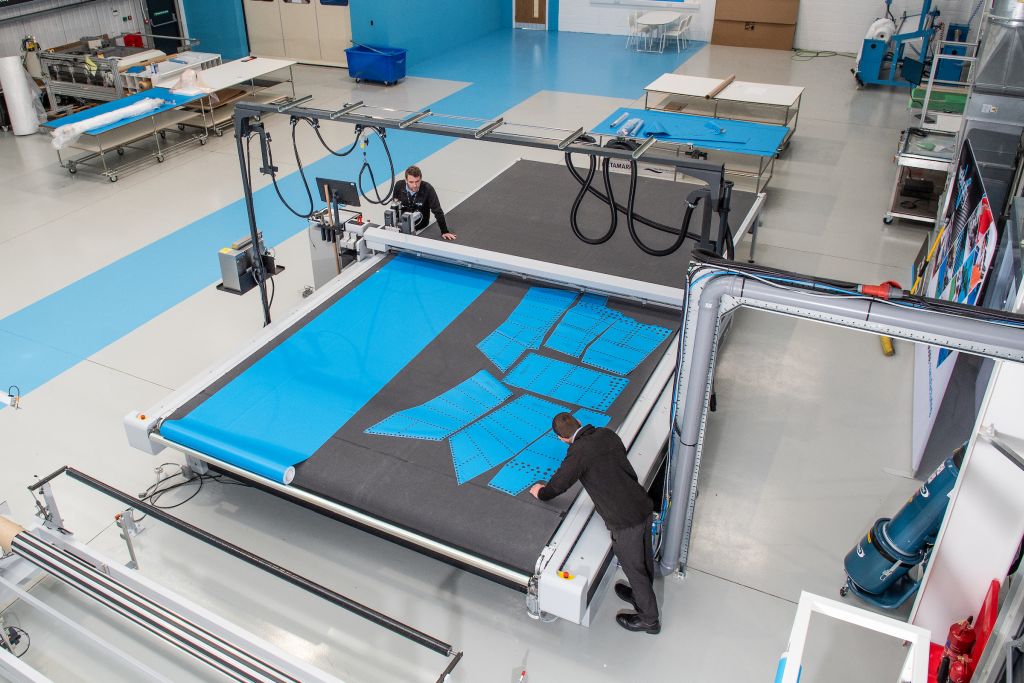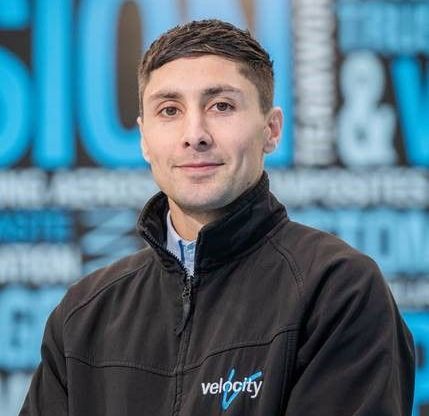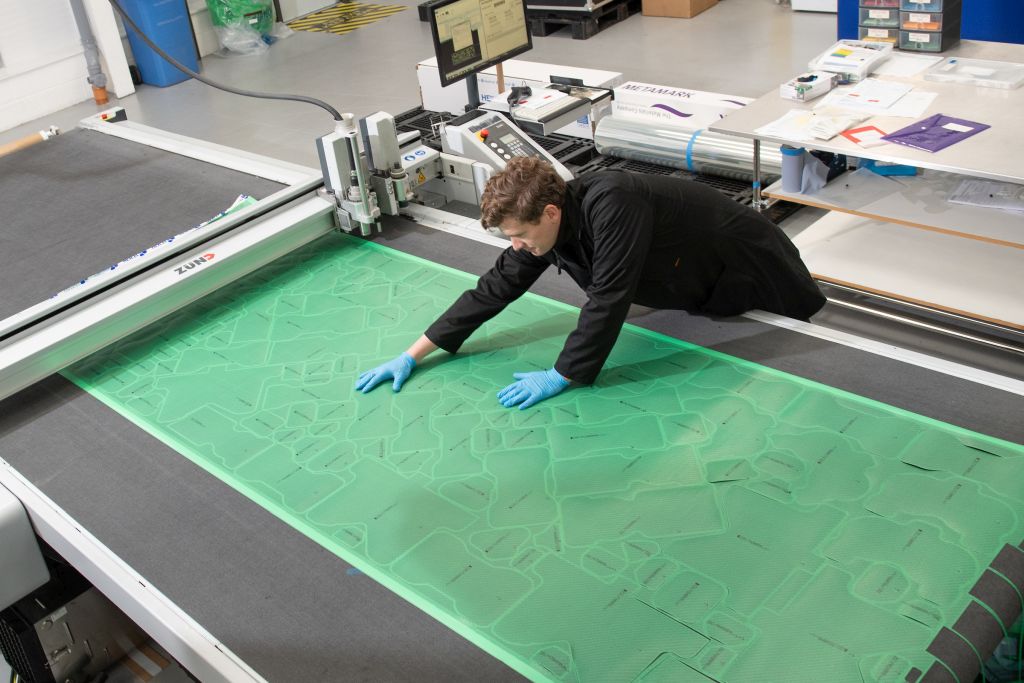Material management matters

The benefits around kitting technology are emerging as a solution to address waste reduction and efficiencies. Velocity Composites’ head of engineering, Emil Khan looks at the kitting advantages offered across the aerospace supply chain and how it is opening up opportunities for other sectors.
The simple term kitting and the benefits it offers are well known in the supply chain, but the increasing need to reduce waste, make efficiencies through the manufacturing process and deliver to the highest quality standards make it an increasingly compelling proposition.
With the average wastage rate of composite materials production as high as 20% in some cases, we have put focus and resource on this very issue and developed our own bespoke proprietary technology designed and modelled it for the composites industry.

This technology has been designed to manage the entire value stream, from customer demand management, raw material management, batch traceability, complex nesting, kit manufacture and kit logistics, with all areas being connected and sharing real time data to drive maximum efficiency.
As a result, our customers have been able to reduce composite material spend by between 10-20% using our processes and systems on a typical programme over time, whilst outsourcing a non-core business. At Velocity Composites, our current level of operational waste across all of our programmes stands at less than 1% – and we continually aim to get better.
Decarbonisation targets
Environmentally, there is a need to look at efficiency gains at every level of aviation, with UK aviation decarbonisation targets set at 15% by 2030 and 40% by 2040, and a commitment to reach net zero by 2050. Composites are already supporting sustainability and helping companies to achieve their low carbon goals by dramatically reducing weight without impacting performance, enabling critical renewable energy sources.
At Velocity Composites, the raw material kits for aerospace flying parts are manufactured in a clean room environment to manage usable life and protect from contamination. Due to the pre-impregnated resin, the raw material rolls are stored at -18°C in our on-site freezers to extend shelf life until they are needed for production. Both the frozen and ambient life of our raw materials and finished parts are tracked in real time at an individual part level, assisted by radio frequency identification technology (RFID) and digital systems for full ply level traceability.
The raw materials used are expensive, often single sourced and have long lead-times, and so there is risk at every step of the process of the chain from material ordering to kit delivery. Without the advantages of our bespoke technology there are significant risks for our customers of managing this in house, such as over/under material ordering, life expiry leading to material not being available and inefficient kit production. It is these risks that our services eliminate and the investments we have made have been in support of our whole customer base.
We also know that our process has to accommodate the normal demand variations our customers experience, and so we support our clients with their kit supply at every step of the way. This includes not only removing waste from the material management and material cutting processes, but also managing a replacement ply process in case of any issues during part manufacture.
With our vacuum bag kits, we also reduce time and part-to-part variation during lay-up of the composite materials into parts. This way Velocity can provide one kit with every material needed to lay-up and cure a composite part. Customers enjoy the further commercial benefits from offloading the purchase and management of their total composite material supply chain, creating a compelling value proposition in today’s challenging environment.
By their nature, composites raw materials have an ambient life which commonly is as short as 30 days, so it is important to schedule in the production process around that and make sure there is no room for slippage or wastage of the material.

Using the Velocity process with digital technology, we ensure there is total traceability of the materials at every step in and out of the freezer, with a full history and audit of all movements, including batch numbers of the materials relating back to the parent roll and supplier backed by RFID technology. As such, our service ensures that a material is still well within specification when cut and supplied reducing the risk of life expiry waste in turn.
This means any production issues can be dealt with before they become a major problem with full root cause analysis possible at any point of our process, supported by real time data, system generated data, video feeds and operator inputs.
Process materials for composites, such as peel ply, release film, breather fabrics and bagging film, are required to control resin bleed, consolidate the plies and ultimately cure the component in the autoclave. Through providing these materials in kit form, customers not only save on material wastage, but more critically greatly improve throughput time of their manufactured parts and typically benefit from improved operational reliability of the ‘bagging process’ during manufacture.
The structured process of kitting, along with developments of our own bespoke Velocity Material Requirements Planning (VRP) system also draws on our Hypernest software and enables the nesting, ply and kitting systems to speak to each other for real time continuity.
Nesting software benefits
As we continue to develop and refine our processes for increasing efficiencies on behalf of our customers and the wider supply chains, we believe other industries can benefit from this adaptive, flexible technology. The automotive, wind energy, sport and leisure industries are already looking at the opportunities. In the automotive industry, the parts are generally smaller and the tooling is more challenging to develop as a result, but the technology and processes are very transferable. In some instances, it may be that the manufacturers simply cannot afford the time and resource in identifying where waste can be reduced and how.

While requiring adaptation, this can still easily be met by VRP, Hypernest and our processes and technologies, ensuring composite materials can benefit the automotive supply chain or even the after-care market.
There are a number of other opportunities for manufacturers in other sectors to look at and benefit from this same technology, with many facing similar issues from highly engineered wind turbine blades, high end marine applications, space vehicles, lightweight electric road transport and urban air mobility. Even the leisure industry is embracing the benefits, with more general products, such as canoes, kayaks and paddles, camper vans and hot tubs using composites which need cost-controlled precision processes for maximum efficiency.
We never stop developing our processes and technology, and in many ways, we have only just started to see the commercial advantages that Industry 4.0 technology brings. The aerospace industry can – and is – getting better at reducing waste and efficiencies, and we can all seize the opportunities presented by the awareness this technology brings.








